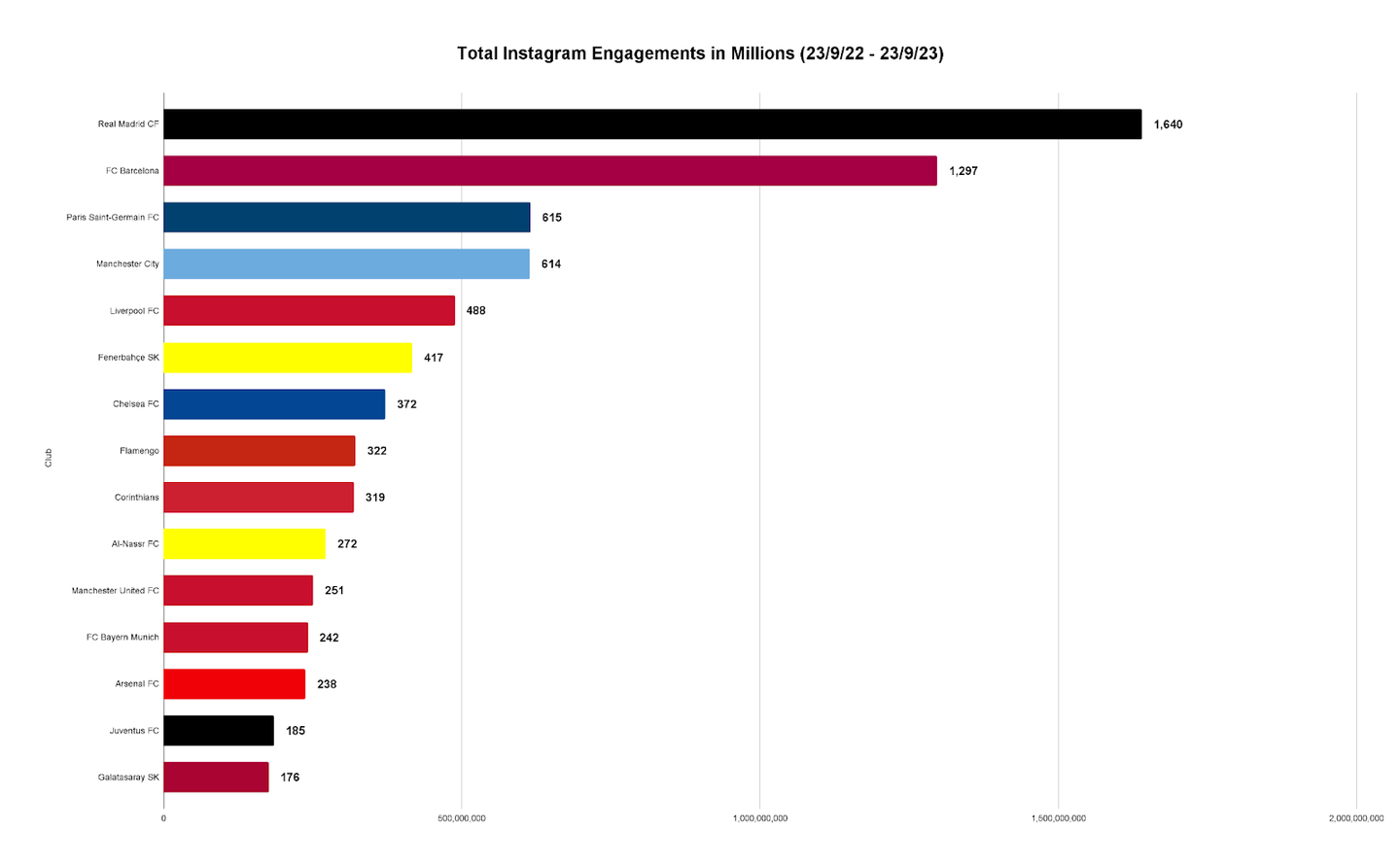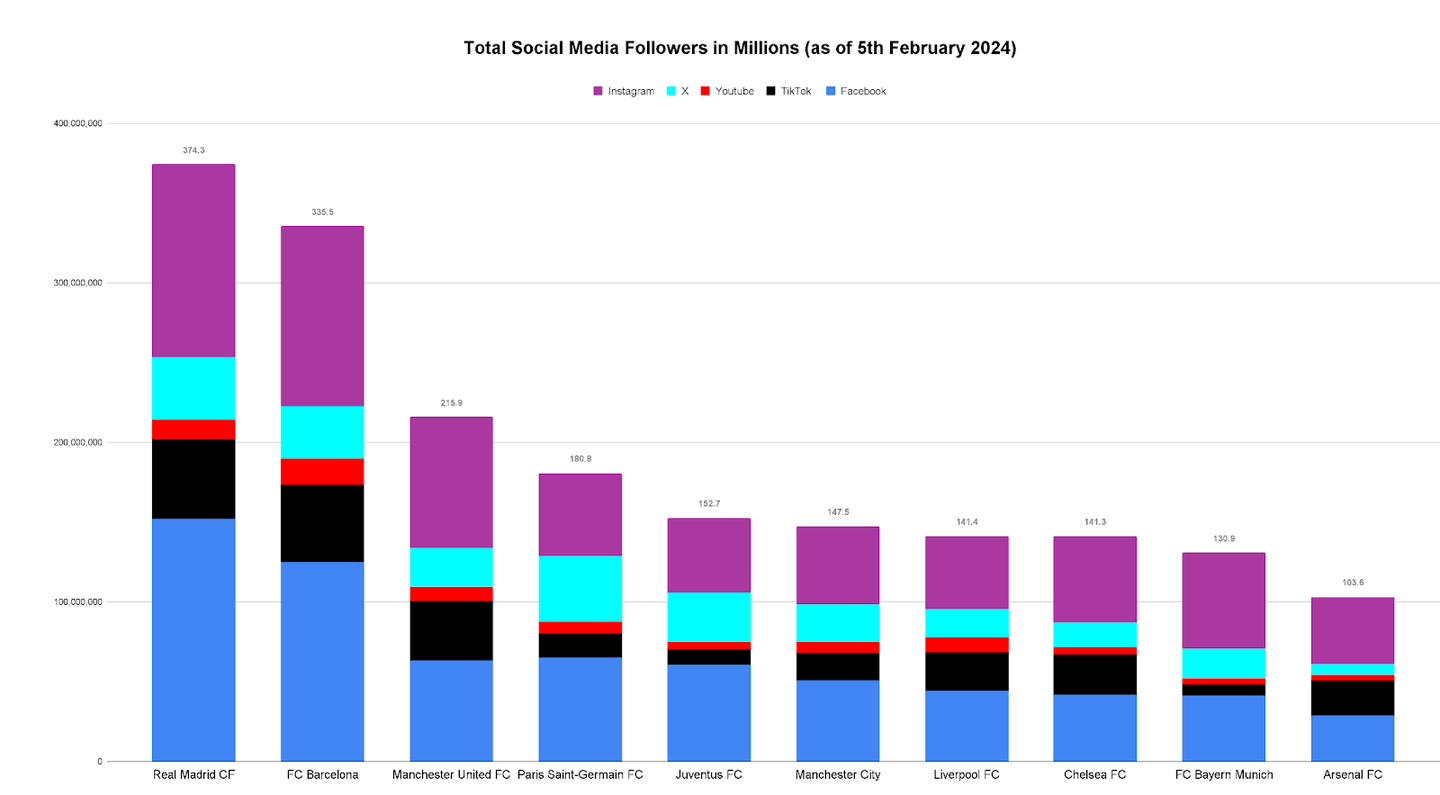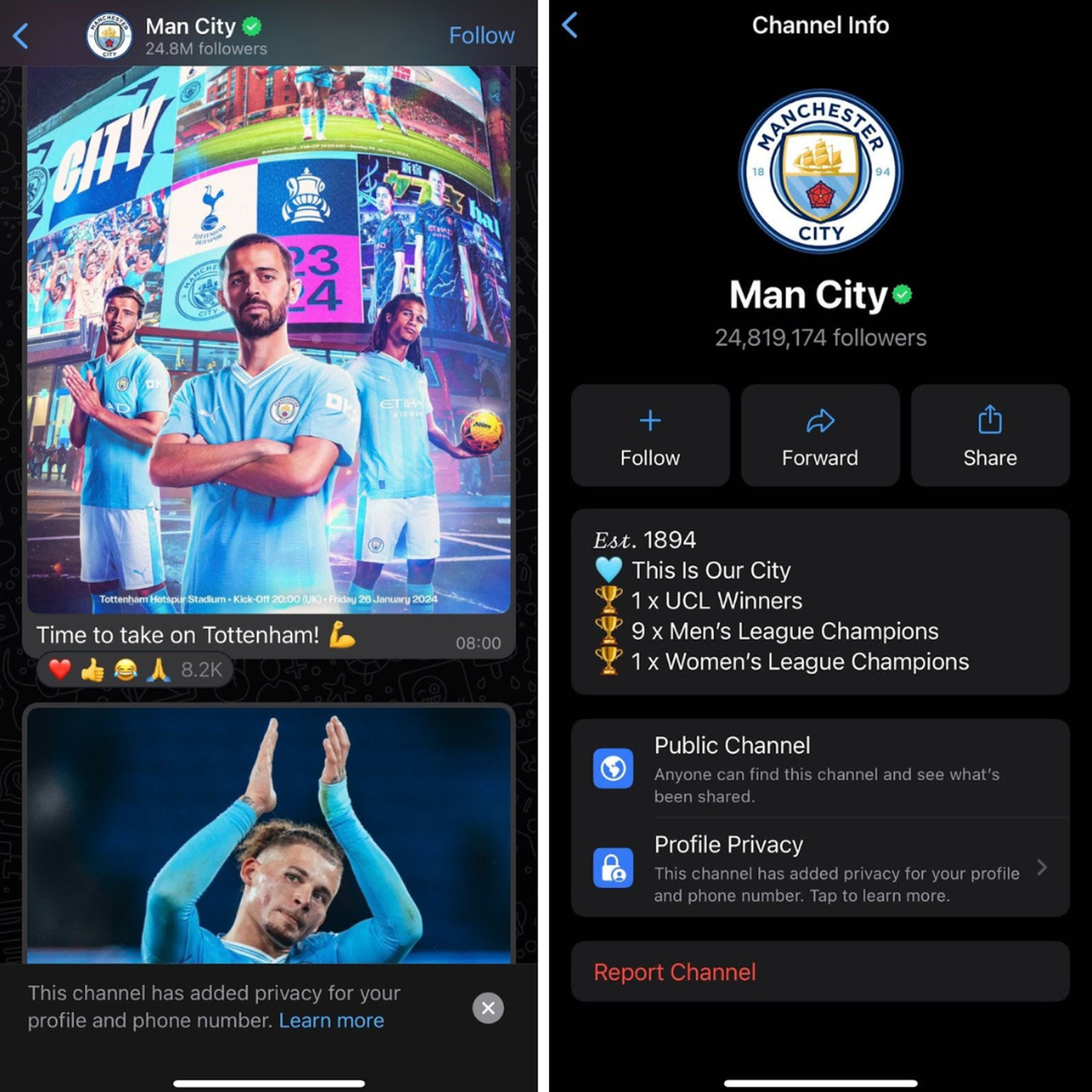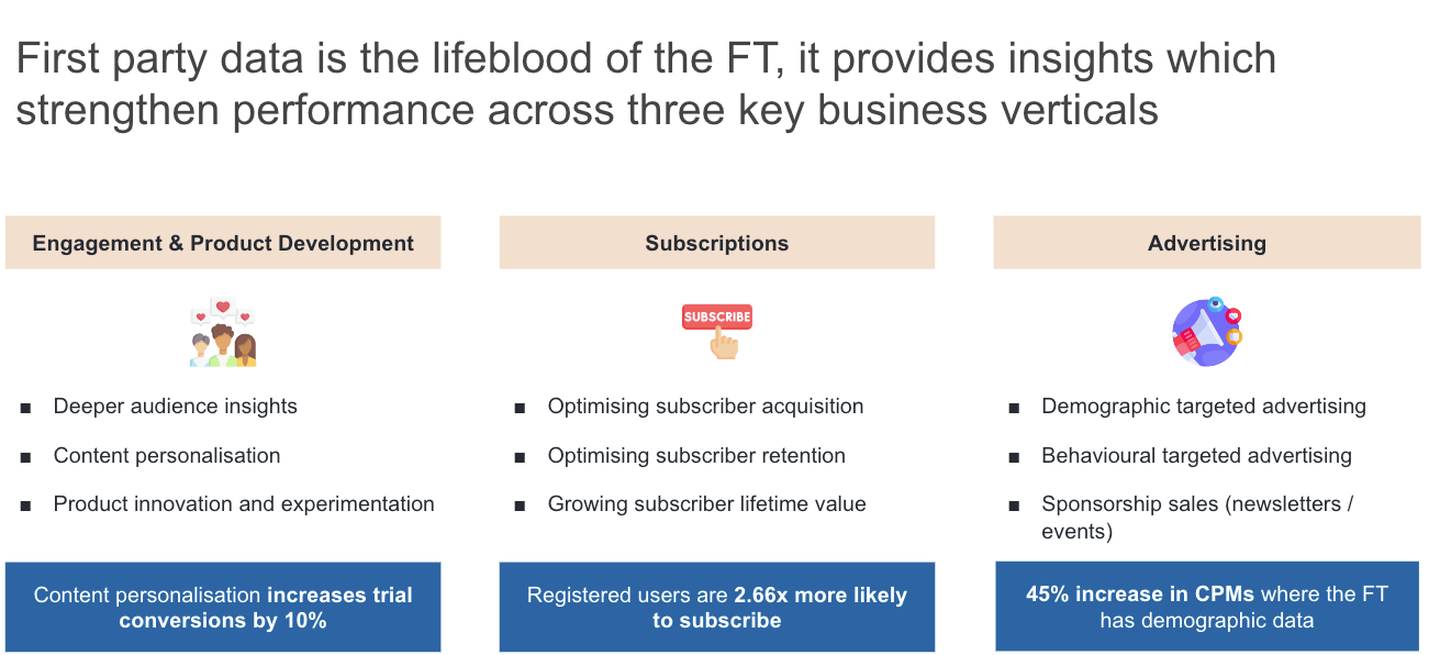The late Franz Beckenbauer once described football as “the world’s best means of communication. (...) Young or old, players or fans, rich or poor, the game makes everyone equal”. With a fanbase estimated at 3.5bn people and growing, it is hard to dispute football’s global appeal. Yet, the quote also strikes at the heart of the challenge that football clubs face in trying to engage ever growing fan bases: How do you connect with both young and old, rich and poor fans who may live five or 5,000 miles from the stadium?
Clubs that can solve this dilemma have a clear advantage as research finds that engaged fans spend six times more than casual fans. This has taken rivalries off the pitch as clubs compete to secure increasingly global fan bases that can be monetised for sponsorship, broadcasting rights and merchandise.
Digital content is central to building engagement, and as such, clubs are investing heavily in their content-generating capabilities. Traditionally, sports generate four types of content:
- Match footage: the primary source of income for football clubs and leagues, with the latest 5-year Premier League broadcasting rights’ package being sold for £6.7 billion. Clubs however have limited access to these rights, which are sold by leagues in exclusive packages to large broadcasters.
- Match reports: often the main form of non-live consumption of sports, simple reports have been commoditised by its free availability on Google - and expected to become even more ubiquitous with the advancement of generative AI.
- Analysis: high-end sports analysis has flourished, and has been pursued by publishers as demonstrated by the New York Times £401 million ($550m) acquisition of the Athletic a long-form sports site with an average of 33.5 million monthly visitors.
- Behind the scenes content (BTS): the focus of most club-produced content, BTS ranges from training ground photos on social media to fly-on-the-wall documentaries.
As fanbases grow, and decentralise from a club’s local area, innovative methods of engagement are needed to ensure long term relationships are built with new supporters. Many of these new supporters may only get to attend a handful of games, if any at all, and as a result to cement the connections necessary to create loyal, monetizable connections clubs have to truly understand the markets they now operate in. Creating and delivering content effectively, building a 360 degree understanding of supporters and designing effective strategies for both attracting and retaining new fans.
New Territories, New Platforms, New Fans
At the same time that the Internet turned the match results section of the Sunday papers obsolete, it has also enabled the disintermediation of fan engagement. This has given football clubs a direct line to their global fan base and paved the way for clubs to think about engagement in new, dynamic ways.
One of the preferred ways used by the largest football clubs to feed their global fans’ appetite for club news between matches is to establish a prolific social media presence.





Real Madrid and Barcelona top the table on Instagram with over 100 million Instagram followers each and 1.6 billion and 1.3 billion engagements in 2023 respectively, both averaging over 400,000 views per post. This shows the attraction of visually engaging content as well as the early mover advantage by the Spanish clubs in developing global audiences. In the early 2000s, Real Madrid bet heavily on the “Galacticos” strategy of recruiting player-celebrities while Barcelona invested on pre-season tours - it launched its Japanese membership website in 2004- and partnerships with global brands such as Unicef.
As clubs aspire to become global brands, they must sell their brand to audiences that have not yet chosen a team, who will become lifelong fans- and social media has been especially effective to reach children (and teens) of all nationalities.





Manchester City's WhatsApp Growth
Manchester City is one of the clubs aggressively pursuing these global audiences through multiple platforms. Besides a YouTube channel with 8 million subscribers, ManCity has its own production facilities and a £5/month streaming subscription service (City+) to exclusive behind the scenes content and full match replays.
In June 2023, ManCity launched its WhatsApp channel, which as of early February 2024 had over 254 million members - passing ManCity’s 17.5m followers’ presence on X and reaching about half the size of its following on Instagram and Facebook. The ManCity platforms have a high overlap of content of player photos, short interviews with players and behind-the-scenes content - the WhatsApp channel, however, is more clearly used to cross-promote City+, link to the team’s website and shop.
Their most recent product launch post, a new ‘Year of the Dragon’ training capsule, received 9.6k reactions in under a week and was accompanied by a 30 second video with Jack Grealish at its centre.





The Footballco Future of Fandom Report found that Gen Z’s preferred digital platforms to consume football content are YouTube (63%) - where they spend an average of 23 hours per month - and Instagram (63%) followed by TikTok (49%) and Twitter/X (35%).
Not all content is created equal, however. While players’ training footage can attract tens of thousands of reactions, documentary style storytelling is better suited to build brands and stand out in a crowded digital landscape. Andrew Baker, Head of Strategy, Football co points specifically to Gen Z’s ‘interest in narrative-driven football documentaries, such as Welcome to Wrexham and the All or Nothing series, and disruptive creators and organisations such as The Sidemen, Kings League and Hashtag United.’
This strategy has been successfully employed outside of football, by brands such as the WWE that place narrative at the centre of their sport, and are increasingly popular with this age group. Mr. Baker believes that the WWE’s strategy “ also highlights the importance of creating fandom at an early age, even pre-teen.”
Lessons in Fan Engagement from the WWE
Recently acquired by Endeavour for $9.3 billion, WWE itself is enjoying a commercial and engagement boom at the moment with:
- 1.5 billion social media followers, nearly 3 times more than Real Madrid.
- 2023’s Wrestlemania 39, WWE’s flagship event, doubled its sponsorship revenue to $20 million. These figures are expected to be eclipsed by this year's edition.
- 2024’s Wrestlemania 40 has broken the WWE gate record, selling over 90,000 tickets.
- A diverse audience base made up of 40% female viewers and live attendances up 34% YoY.
- 2023 revenue totalled $1.326 billion, up 3% YoY.
- On April 1st 2024, WWE broke it’s gate record for a weekly show with RAW selling over 13,000 tickets, becoming the companies 13th consecutive sell out.
The success of WWE’s strategy has been underscored by its recent deal with Netflix, which could end up being worth over $5 billion, marking Netflix’s first foray into live sports. The deal is predicated on the combination of the WWE’s reach among younger audiences to Netflix’s ability to target ads and monetise subscriptions.
With record incomes, global growth fostered by sold-out Premium Live Events in Saudi Arabia, Australia, France & the UK and a growing, diverse audience: What lessons can football learn in fan engagement from the WWE? Could this deal signal an entrance of global streaming providers such as Netflix in the competition for rights to the most popular football leagues?





Football clubs’ first forays in the narrative driven format were made through third parties, partnering with streaming services such as Netflix for ‘Sunderland Till I Die’ and Amazon for ‘All or Nothing’. ‘Welcome to Wrexham’, the Disney-produced documentary on Wrexham A.F.C following their takeover by Hollywood actors Ryan Reynolds and Rob McElhenney, is a prime example of the reach this type of content can bring. Sponsorships from global brands such as Tik Tok, United Airlines, Hewlett-Packard and Vistaprint - remarkable for a small-town team in the English 4th division - helped boost Wrexham’s income by 404% in the documentary’s first season.
The popularity of these shows demonstrate how partnerships can provide a significant source of revenue, especially for smaller clubs, while some larger clubs succeeded in using them for brand marketing. However, clubs that have more control over these productions reap even greater benefits including the collection of valuable first party data (FPD) and better control of the narrative. Hence the recent deluge of club-made documentaries such as “Step by Step” (Arsenal), “Together: Treble Winners” (Manchester City), “Munich” (Manchester United) and “Camp Nou Kitchen” (by Barcelona’s own BarçaStudios).
Manchester City are one of the clubs who have invested heavily in self produced content. City Studios, headquartered in the club’s main training complex, is made up of 85 dedicated content makers who created 900 productions in 2023 alone. Manchester City ranks 4th for both average video views (332k) and active social users (239 million) with only Barcelona, Real Madrid and PSG sitting higher. The club also enjoyed nearly double the next best social media community growth in 2023, with 53,605,813 followers added across all social platforms. The success of this internal production studio is such that Netflix have acquired their BTS documentary of last season’s historic treble win.
However, just as publishers found out when they transitioned to digital, investing in content requires the development of a coherent portfolio and the careful management of interactions to maximise the chances of monetising audiences. Therefore, the collection and deployment of vast swathes of first-party data is vital to a successful strategy.
If Content is King… Data is Queen
FC Bayern Munich are a standout example of how clubs can use data to drive commercial success. Working with SAP, Bayern combined data from 52 platforms to create a 360 degree view of their fans called the ‘golden fan record.’ The data enables the club to launch personalised, global, multi-channel marketing campaigns. By knowing more about their fans, they can identify growth opportunities. Stefan Mennrich, director of Media, Digital and Communication, FC Bayern Munich feels the benefits of this have been obvious from the boost in new customer revenue, online shopping car value and sales via mobile devices. Mennerich also describes how data has helped identify the club’s substantial fan base in Asia, with approximately 95% of their social media followers coming from outside Germany. However, 50% of registered fans of the club come from within Germany, this discrepancy indicates that Bayern still have much work to be done, especially in the Asian market.
Not all football clubs were so quick to recognise the importance of data: according to Spanish football site Sport, FC Barcelona’s EUR 280 million sponsorship deal with Spotify was constrained by the club’s lack of customer data. The report suggests that Swedish streaming giant was disappointed to receive access to data of less than 1% of the club’s claimed 350 million registered supporters. This example exemplifies the need for clubs to become better at leveraging data to know their fans and match sponsors’ expectations.
Collecting and utilising customer data is a familiar challenge for content publishers: With the advent of the Internet, media organisations had to completely rethink their business models to leverage first party data. FPD allows publishers to create powerful churn and lifetime value (LTV) models, enabling targeted outreach to customers, informing paywall strategies and providing value to premium advertisers.
However, simply posting content on platforms such as Instagram, Youtube and Whatsapp doesn’t allow club’s to harvest masses of FPD. Engagement on these sites demonstrates popularity but often fails to lead to the collection of user data. To mitigate this limitation, 9 out of the 10 of the world's biggest clubs offer OTT services that require fans to register to use. By putting long-form content such as documentaries behind this paywall it opens up both a new revenue stream and a new engagement tactic for clubs to leverage. An emerging trend that has come out of this is content localisation, with clubs who may have a large percentage of fans in Korea for example able to offer commentary in Korean, personalised advertising opportunities for regional brands or exclusive content for fans in these regions.
This also offers clubs a new way to engage with their fans, offering alternative experiences of matches such as highlights with data driven overlays or statistical deep dives into individual player’s performances. Teaming up with Infinite Athlete, Chelsea have introduced this for both their Men’s and Women’s match footage, allowing fans to see match data that traditional coverage lacks. This has been popular with fans, and an effective way of bringing audiences into their ecosystem through their app, with Chelsea’s 2023 preseason tour footage having 2.7 million views, a 48% increase on 2022, with almost 50% of all viewers interacting with Infinite Athlete’s MVX suite of data insights. With clubs having limited access to match footage, the unique experience they offer their fans when watching matches directly through their channels could be decisive in converting fans into registered users.
As clubs become data informed, omni-channel content producers, they need to change their mindset from a marketing perspective to a content publisher one if they want to sustain strong relationships with both their fans and commercial partners. To achieve this, clubs will need to:
- Produce unique and engaging content: while hardcore fans are less demanding, quality and story-telling are fundamental to capture new or less engaged fans. Clubs can’t rely solely on BST photos and short interview footage of players. Would a news publisher survive with only this type of content?
- Understand the differences of each platform: different audiences consume content differently and expect different outputs in each platform - photos and short videos are more popular with younger audiences while short news and testimonials can cater for e.g. older and female demographics.
- Set up effective mechanisms to collect first party data: not only to collect first party data but also to enrich it with data from other sources as your database grows.
- Leverage insights to tailor your content: ensure that internal teams are data informed, using insights to segment your fan base and drive decisions on content production, commercial strategies and engagement initiatives.
The question that remains for clubs is not whether to embrace this opportunity but how quickly can clubs do so to implement an engagement strategy that is as clinical as Halaand, as exciting as Henry and as complete as Messi.

